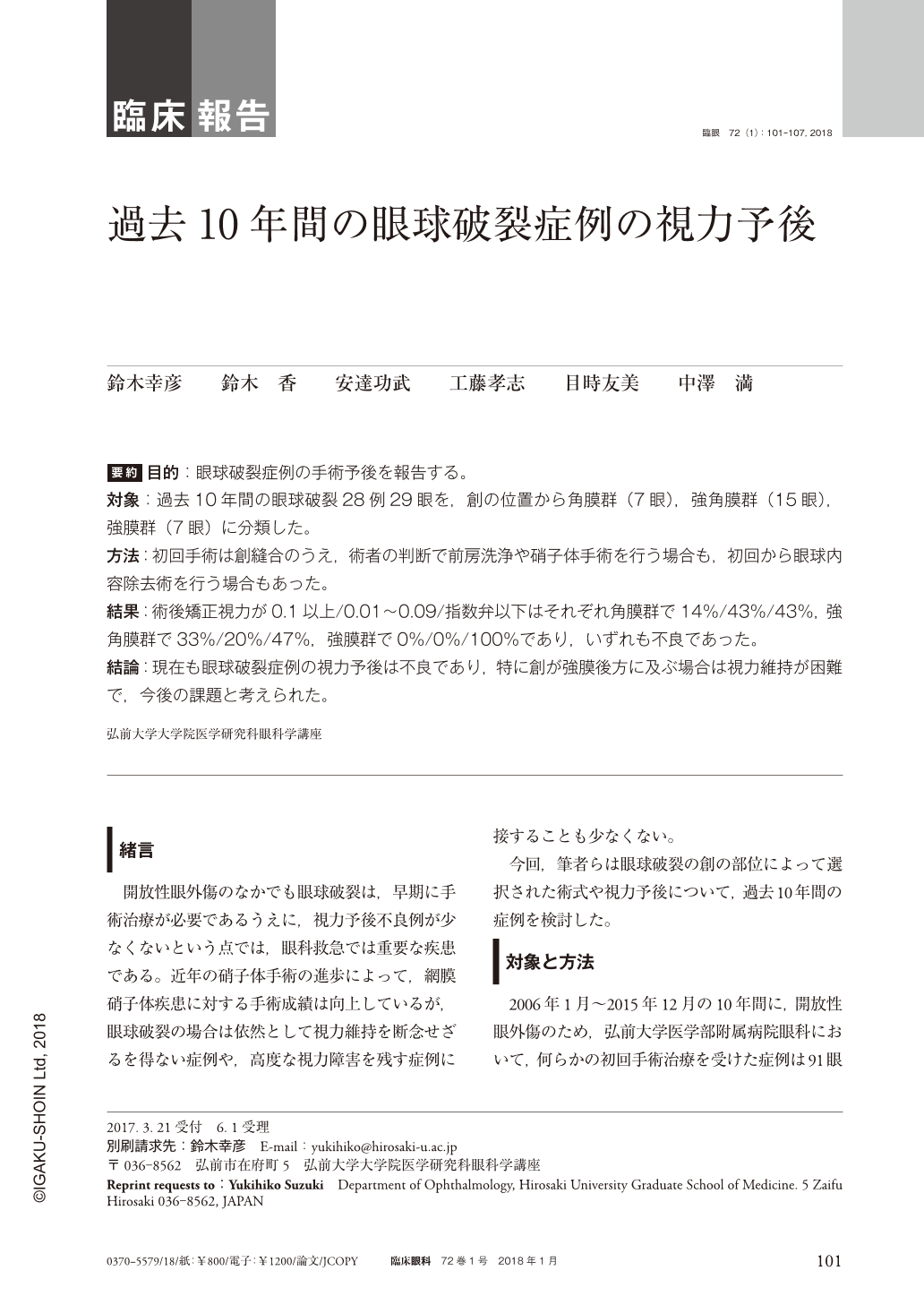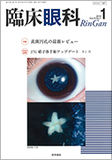Japanese
English
- 有料閲覧
- Abstract 文献概要
- 1ページ目 Look Inside
- 参考文献 Reference
要約 目的:眼球破裂症例の手術予後を報告する。
対象:過去10年間の眼球破裂28例29眼を,創の位置から角膜群(7眼),強角膜群(15眼),強膜群(7眼)に分類した。
方法:初回手術は創縫合のうえ,術者の判断で前房洗浄や硝子体手術を行う場合も,初回から眼球内容除去術を行う場合もあった。
結果:術後矯正視力が0.1以上/0.01〜0.09/指数弁以下はそれぞれ角膜群で14%/43%/43%,強角膜群で33%/20%/47%,強膜群で0%/0%/100%であり,いずれも不良であった。
結論:現在も眼球破裂症例の視力予後は不良であり,特に創が強膜後方に及ぶ場合は視力維持が困難で,今後の課題と考えられた。
Abstract Purpose:To report the visual outcome of surgically treated cases of eyeglobe rupture in the past 10 years.
Cases and Method:This retrospective study was made on consecutive series of 29 eyes of 28 cases who were treated by us for eyeglobe rupture in the past 10 years. Eyeglobe rupture was classified into 3 groups:the cornea group(7 eyes), sclera-cornea group(15 eyes), and sclera group(7 eyes). As the standard procedure, the wound was closured by suture, the anterior chamber was irrigated, and vitrectomy or exenteration was performed by the decision of the surgeon.
Results:Postoperative visual acuity in the cornea group was 0.1 or better in 14%, 0.01 to 0.09 in 43%, and no better than counting fingers in 43%. In the sclera-cornea group, visual acuity was 33%, 20% and 47% respectively. In the sclera group, visual acuity was 0%, 0% and 100% respectively. Postoperative visual acuity was thus poor in all the three groups.
Conclusion:Outcome of vision was generally unfavorable in eyes with rupture of eyeglobe. Vision was particularly poor when the wound involved the posterior eyeglobe. This problem is one of the challenges for the future.

Copyright © 2018, Igaku-Shoin Ltd. All rights reserved.


